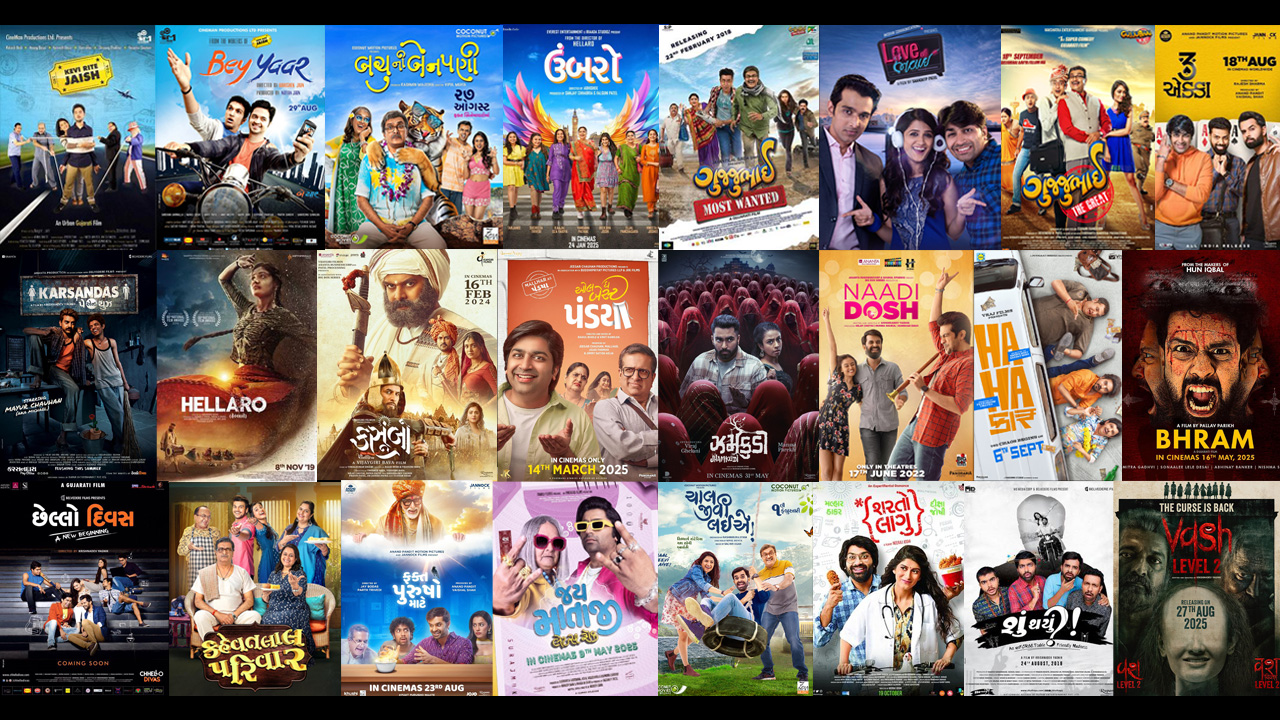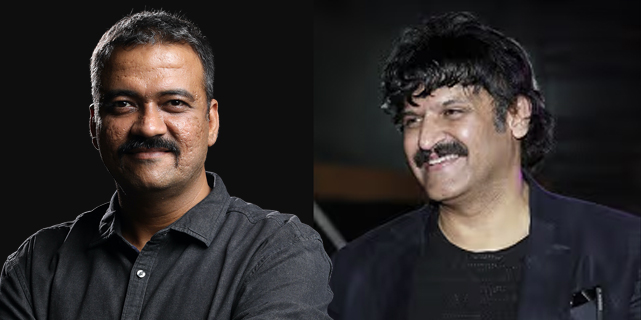
Over the last decade and a half, Gujarati cinema has seen something of a quiet revolution. However my debut film Kevi Rite Jaish is credited as the that started of urban Gujarati film movement, but honestly I think it all started way before it got realized, Dariya Chhoru, Better Half, Love is Blind and many such films paved path for Kevi Rite Jaish (2012) but the real test was with Bey Yaar (2014) that proved audiences would pay for stories that reflected their world, then came Chello Divas(2015) that drew crowds in numbers we hadn’t imagined — the graph has only gone up and the engine got an ignition. It is a meticulous brick by brick construction and then came a lot of films that have surpassed audiences and creators expectations. We have also added feather in the hat by bundle of national awards, international recognition. And recently, when the Gujarati film industry collectively crossed the ₹100-crore mark, it wasn’t just about revenue — it was a statement that Gujarati cinema had arrived as an industry worth taking seriously.

But here’s the irony — while our storytelling and talent have matured, the financial backbone of our films is still unorganized, driven by emotional decisions by investors, and mostly individual-driven. Money flows in, yes — but without structure, long-term vision, or accountability. And from whatever I am writing ahead, is purely my observant view, things might differ from individual to individual gracing subjectivity and respecting point of views.
One of the most basic — yet most misunderstood — distinctions in filmmaking is between a producer and a financier. While a producer is the architect. He/She/They develops the story/ commissions it or identifies it, hires the right team, manages the creative process, balances the budget, and ensures delivery. They don’t necessarily invest their own money, but they’re responsible for how every rupee is spent and how the film takes shape. On the other hand, a financier, provides the capital with a humble expectations of return on his investment. Their job is to fund the vision, not necessarily to build it. This is where the core difference lies.
But in Gujarat, because there’s no structured studio system or dedicated film funds, these two roles often merge into one. Anyone who puts in money becomes a “producer.” But the title of producer is not just financial — it’s creative and managerial. It comes with ownership, decision-making, and execution responsibilities. This confusion often leads to mismatched expectations — financiers think they’re investing in a business, while producers see it as a creative journey. And somewhere in between, clarity is lost.
It’s time we clean up our terminology too. If you’re investing the money, you’re a studio or financier. The producer is the one who executes the project creatively and financially within your framework. Think of it like a construction project — the financier is the developer or client; the producer is the project manager ensuring the building is completed to spec, on time, and within cost.
In that sense, the producer is almost like a creative service provider — accountable, resourceful, and answerable. The moment these roles blur, chaos begins. If every investor starts demanding creative control, and every producer forgets the value of budgets and business, the system collapses.
Another recurring problem I’ve noticed is what I call the one-film syndrome. Someone decides to fund a film — maybe out of excitement, curiosity, or love for cinema. They invest once, the film doesn’t recover its money, and they vanish from the scene forever. It’s understandable. Film is unpredictable business. But only if you treat it as a business, you can’t expect your first product to be instantly profitable. No business works like that. When I started out, my first three films were funded by my family business office. The deal was simple — a five-year commitment to make three films. No pressure of returns from the first one. The belief was in the bundle, not the unit. With that deal we made Kevi Rite Jaish, Bey Yaar, and Wrong Side Raju. All three were passion-driven, not profit-obsessed. And by the third film, the math balanced itself out.
That’s the kind of long-term vision we need — not one-film experiments, but portfolio thinking. If you invest in five films, two might fail, one might break even, and two could make up for the entire basket. That’s exactly how startup investors think, right? The business of cinema needs that same logic — because creativity thrives only when it’s not constantly gasping for short-term returns.
Put my above point in an analogy, a startup investor knows not every bet will work. They diversify, back the team, and stay for the long game. And the business of films are no different.
A smart film financier must think like a serial investor — funding multiple projects with a portfolio mindset. That’s when real learning, real returns, and real sustainability emerge. Sadly, what we often see in Gujarat are two extremes — people who enter film investment for fame or social brag value, and others who use it as a financial cover for malpractices like loss booking under the guise of “diversification.” Both are short-sighted. What the industry needs are clean, patient investors who see cinema as a cultural business, not a quick thrill. And from here they can be part of the growth story of Gujarati cinema.
Lately, I’ve also noticed another disturbing trend — financiers asking directors or producers to co-invest in the project. On the surface, it sounds fair — shared risk means shared responsibility. But in reality, it’s an obnoxious ask. Because if a director or producer already had the money, they wouldn’t be looking for funding in the first place, also gives out the image that investor is primarily offering debt loaded with interest, instead of putting the skin in this game.
However, I also understand where it comes from. Many investors have been burnt. They’ve seen cases where, after a film is made, the creative team loses interest — they hop onto their next project with a new set of investors, leaving the previous financier stranded and clueless. In most of the cases, the director is the one securing fund from an investor without even partnering with a specialized producer thus ending up creating a team to manage the money, in which, for most of the cases, the team is incapable of managing the money and owning up the accountability. That’s a valid frustration. And honestly, this is the trust gap we creative people need to acknowledge and fix.
Producers and directors must build credibility — by staying accountable, by remaining involved in the film’s journey post-production, release and marketing and till the end of it all, and most importantly by being transparent about risks and numbers. Trust is a two-way street. Financiers need to understand the volatility of the film business, and creators need to honor the money that fuels their vision. Afterall if the money is at stake for investors, the credibility and career of a creative person is also at stake.
Let’s be realistic — film returns rarely compete with real estate or gold or say mutual funds. So why invest at all? Because films offer something those investments can’t — social currency, cultural legacy, and influence.
A good film can amplify a brand, create public goodwill, and position an investor as someone contributing to culture, not just commerce. It can open doors — to networks, respect, and credibility that money alone can’t buy. Films can also become assets in themselves — through rights exploitation like remakes, OTT rights, music, and catalog value. The right kind of IP can live for years. So yes, the ROI might not be immediate — but the ROE (Return on Emotion, Reputation, and Equity) can be priceless infact, invaluable.
If Gujarati cinema is to move forward, the first thing we need is a structured financial framework. Imagine a slate model — say, 5–7 films over 3 years, backed by a film fund or studio setup. Investors come on board as equity participants, not donors. Producers operate within fixed budgets. Exit plans exist — through co-productions, new investors, or equity dilution, who knows, may be the exit lies in capital market participation. That’s how you make it sustainable — by professionalizing passion.
Thankfully, some people are already moving in that direction. When Anand Pandit Motion Pictures partnered with Vaishal Shah to form Jannock Films, it brought together structure and storytelling. Vaishal could focus on his core strength — producing and marketing — while the financial discipline was ensured. Similarly, producers like Krunal Soni, Nilay Chotai, and teams like Vraj Entertainment, Coconut Motion Pictures, and Krishnadev Yagnik’s production setup are creating repeatable, scalable systems. They understand that filmmaking is both art and enterprise. And that’s the balance Gujarat needs right now in manifolds.


My concluding thoughts are that right now to scale up and to reach newer heights, Gujarati cinema doesn’t just need more films — it needs better systems. It needs financiers who treat film like a long-term cultural investment. It needs producers who treat budgets with as much love as they treat scripts. It needs directors who stay accountable even after the last shot is wrapped. Because filmmaking isn’t about getting lucky. It’s about staying consistent. When we stop treating films like one-off gambles and start seeing them as cumulative investments — creative, financial, and emotional — we’ll truly become an industry.
The day money and meaning shake hands — Gujarati cinema won’t just grow; it’ll scale.
(All image copyrights belong to their respective creators.)